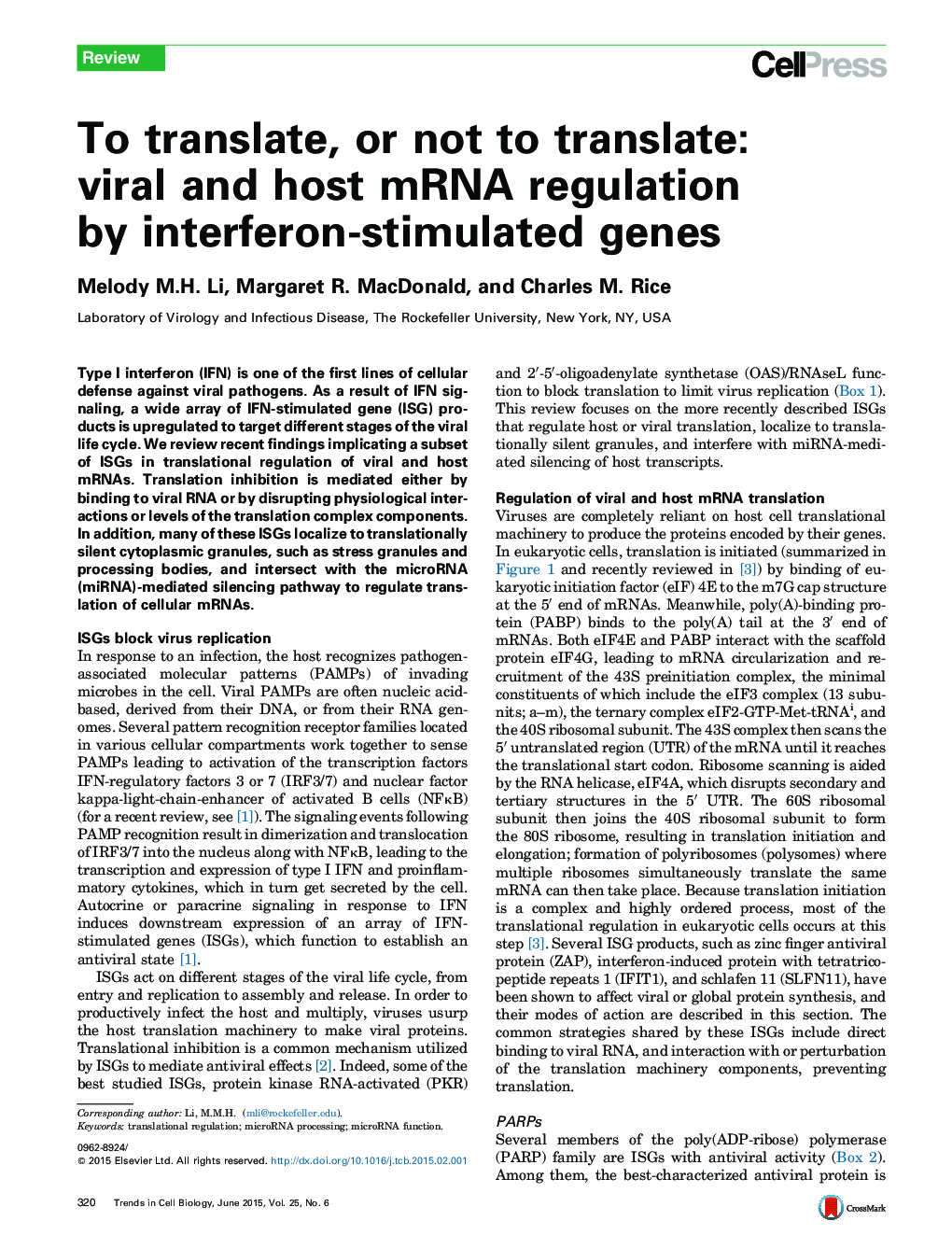| Article ID | Journal | Published Year | Pages | File Type |
|---|---|---|---|---|
| 2204370 | Trends in Cell Biology | 2015 | 10 Pages |
•Translational regulation of viral and host mRNA is an important function of a subset of interferon-stimulated genes (ISGs).•These ISGs repress translation through binding to viral RNA, direct interaction with, or perturbation of the translation machinery components.•Several ISGs localize to cytoplasmic granules such as stress granules (SGs) and processing bodies (PBs), and interfere with the processing or function of microRNAs (miRNAs).
Type I interferon (IFN) is one of the first lines of cellular defense against viral pathogens. As a result of IFN signaling, a wide array of IFN-stimulated gene (ISG) products is upregulated to target different stages of the viral life cycle. We review recent findings implicating a subset of ISGs in translational regulation of viral and host mRNAs. Translation inhibition is mediated either by binding to viral RNA or by disrupting physiological interactions or levels of the translation complex components. In addition, many of these ISGs localize to translationally silent cytoplasmic granules, such as stress granules and processing bodies, and intersect with the microRNA (miRNA)-mediated silencing pathway to regulate translation of cellular mRNAs.
